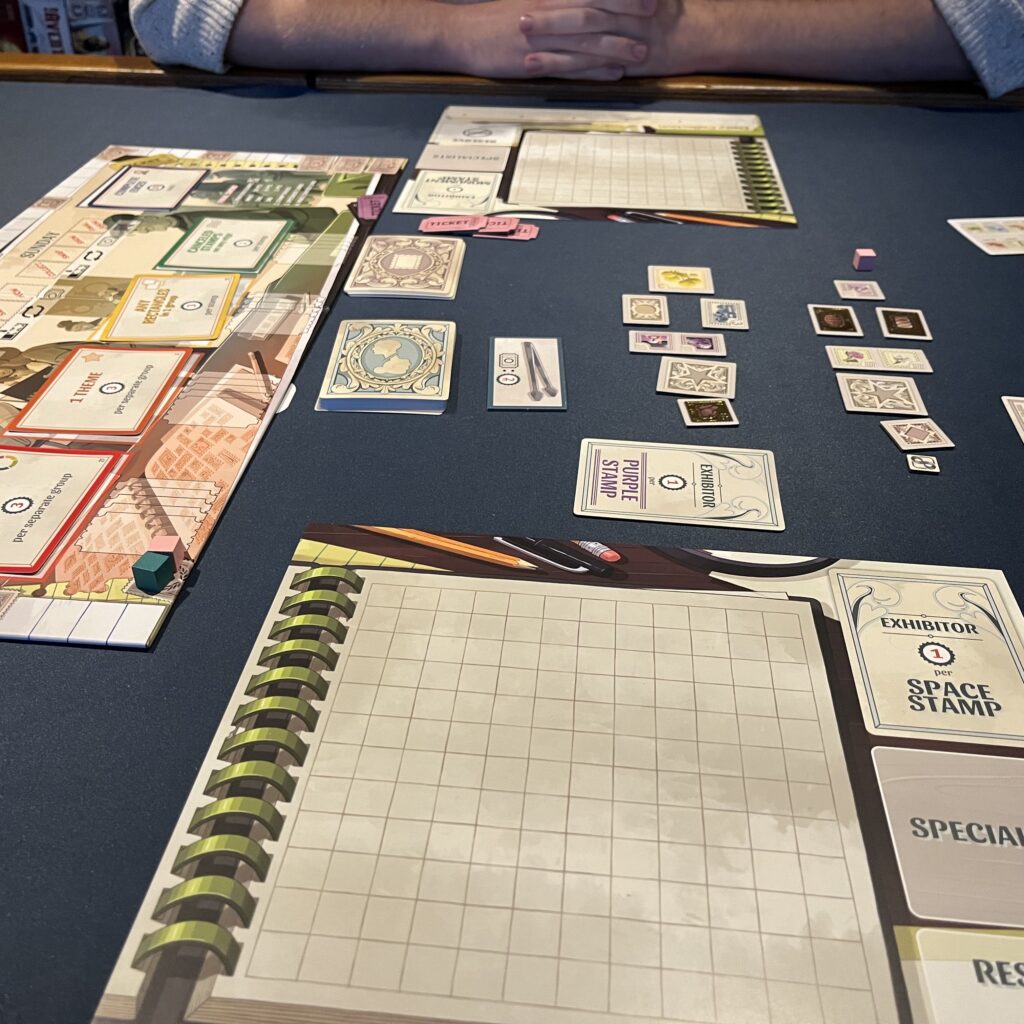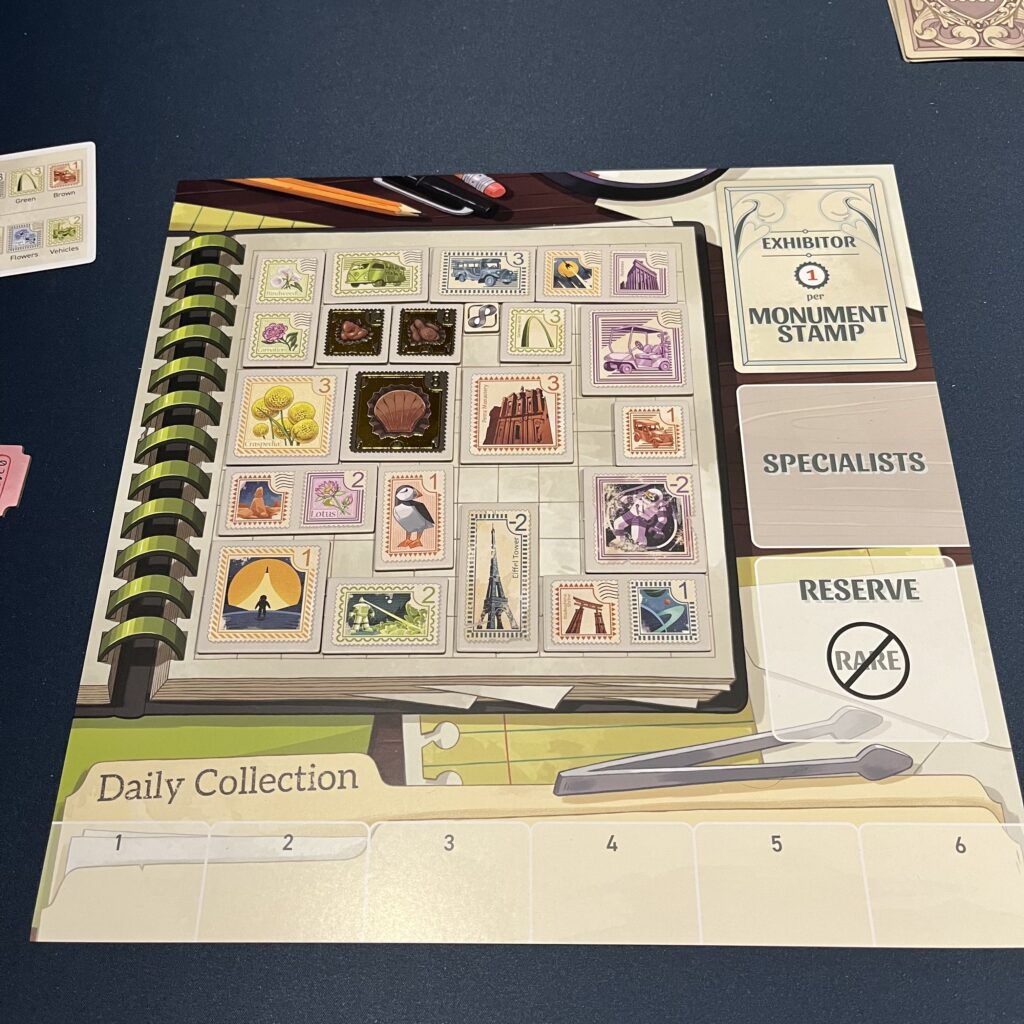Hobbies come in all shapes and sizes, and many hobbies lead to a gigantic collection of trinkets. Often such collections are treated – perhaps unfairly – as something doltish or corny by outsiders. Take for example model trains or stamp collecting. For that matter, be honest and take a good look at yourself. Hundreds of games in a collection you have expertly assembled is not very different from a fancy folder full of stamps, is it? And those stamps take up far less space than those square or rectangular boxes. Having a hobby is something beautiful and valuable. Hobbies come in all shapes and sizes. Stamps come in all shapes and sizes, and in Stamp Swap, players will collect and exchange stamps to score the most points.
Background and purpose
What are stamps, young readers, who also don’t know what a mailbox is, may ask. Well, Dice Daniel helps you along the way (Grandpa tells!). Postage stamps are used to indicate that the delivery of a piece of mail has been paid for. Similar to your shipping label from Vinted. Stamp collecting (or the hobby of it) is also known as philately. It originated in the 19th century, the century where the use of the postage stamps originated. For the younger readers I addressed above: people collect stamps in a similar way that you collect Pokémon cards or sneakers: hoping your collection will become worth a bunch of money because you have rare stamps. Or because you just think it’s beautiful. Feel free to decide yourself.

Although philately sounds like a dirty word is a contraction of the virtuous and pious Greek words phileon (φιλεων) and ateleia (ατηλεια), which mean “love” and “free from taxation,” respectively. Obvious. In Stamp Swap, players also engage in philately, going through three rounds of stamp collecting to score points at the end of each round and at the end of the game based on their collection and the public goals of a stamp exhibition.
Gameplay
During the three rounds, depending on the number of players, an amount of event cards are turned face up. The top one of these cards provides a special effect for this round, and all the cards together determine which stamps and cards make up the collective pool from which players can draw.
Players take turns choosing from the public pool (which thus consists of closed and open postage stamps along with some bonus cards) until each player has collected 6 items (unless the event says otherwise). After that, each player goes to reserve an item (they get it anyway) and then each player divides their items into 2 separate groups. Closed tiles remain closed, but the player who took this item from the pool may view it first.
Each player selects a group of with items another player. If one player’s group is selected, that player keeps the other non-selected group himself until every player has selected another player’s group.

Players may then place their seals on their board. They then score points for personal goals and may score one of the public goals. Note that each player can only score a public goal once. At the end of the game, point scoring for the final exhibition goal also follows.
Verdict
In terms of the quality of the game components, Stamp Swap is a typical Stonemaier game.All the game materials are beautiful, colorfully illustrated and the rules are clear. Stamp Swap is probably the lightest and most light-hearted game Stonemaier currently has in its collection.The rules cover only 3 pages and the game flow is clear.Also, Stamp Swap is very smooth, with players having to wait for each other very little. An interesting feature is that players choose what they score for at the end of a round, providing a dynamic choice and a nice tactical edge.





